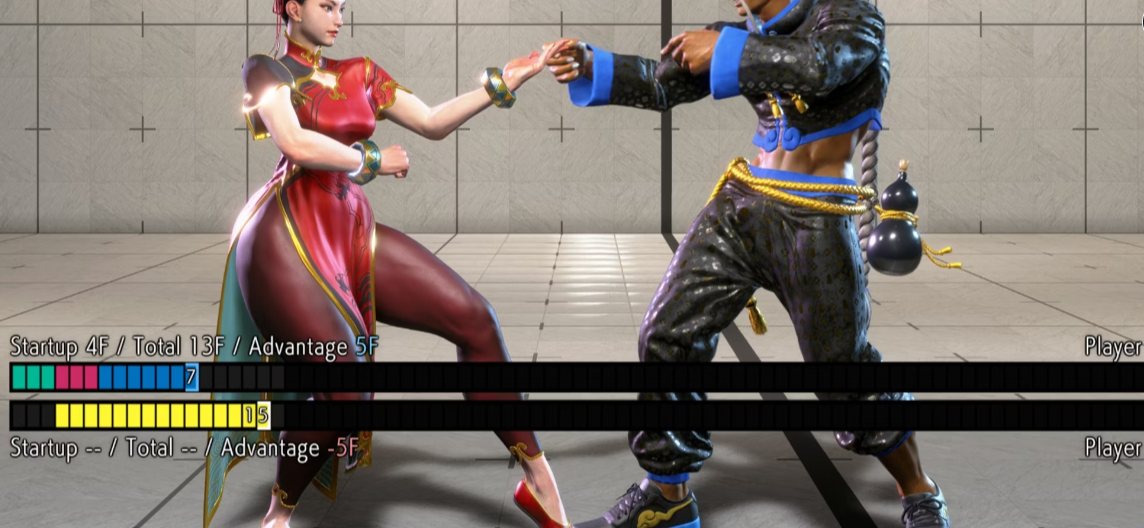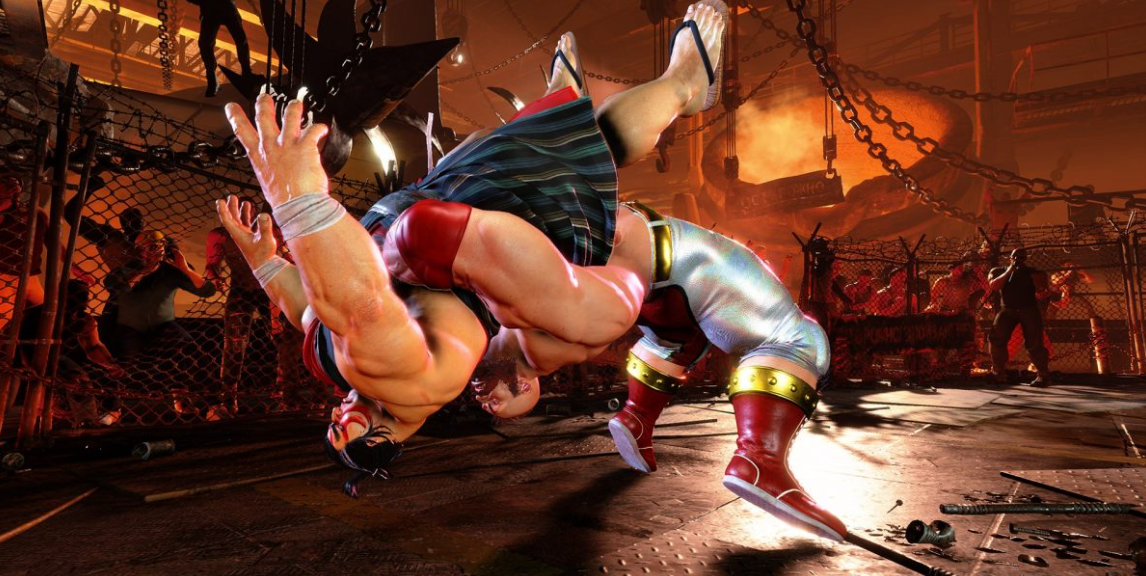Gaming
Street Fighter 6 Frame Data System Explained

Do you want to dominate your opponents and showcase your superior skills in Street Fighter 6? Understanding the intricate details of the game’s frame data system is the key. In this article, we’ll delve into the world of Street Fighter 6 Frame Data and explore how it can give you a significant edge in battles. So, get ready to elevate your combat prowess and become a force to be reckoned with in Street Fighter 6.
What is Street Fighter 6 Frame Data system?
Do you want to know how the Street Fighter 6 Frame Data system works and how it can enhance your gameplay? Well, let me break it down for you. The frame meter in Street Fighter 6 represents each individual frame, showing you the smallest units of time that make up the game’s animations. With a default rate of 60 frames per second, you can imagine how intricately these frames portray movements like attacking, blocking, and jumping.
The Frame Data system provides valuable information about the timing and duration of each move, dividing them into three crucial stages: Startup, Active, and Recovery Frames. Understanding this data can give you insights into frame advantages and disadvantages, allowing you to make precise decisions and dominate your opponents.
Frame data in Training Mode has been improved with a new set of bars in the middle of the screen.
See the startup, total, and recovery frames for an individual move or an entire combo all at once. This also includes the opponent’s recovery! 🕹️ pic.twitter.com/BoaRjhcbQC
— Street Fighter (@StreetFighter) September 16, 2022
How To Read Frame Data in Street Fighter 6
To fully comprehend the intricacies of reading frame data in Street Fighter 6, you need to pay attention to both the startup frames and the recovery frames, as well as understand how they interact with each other. Startup frames are the initial movements that set off the attacking animation, while recovery frames occur after successfully landing an attack and signify the character’s return to a neutral state.

By analyzing the frame numbers, you can determine the advantages and disadvantages of each move. Positive frame numbers indicate an advantage, allowing you to act before your opponent, while negative frame numbers leave you vulnerable to attacks. Understanding frame data is crucial in gaining an edge over your opponents and executing punishing maneuvers.
Types of Frame Meters in Street Fighter 6
In Street Fighter 6, different types of frame meters provide valuable information about the timing and duration of each move. The frame data system divides each movement into distinct sections: Startup Frame, Active Frame, and Recovery Frame.
Understanding these types of frame meters can help you analyze the advantages and disadvantages of your attacks, allowing you to make strategic decisions and gain an edge over your opponents.
Startup Frame
Understanding the startup frame is crucial in Street Fighter 6 as it determines the vulnerability of your attack and sets off the attacking animation. When you initiate an attack, the startup frame represents the initial movement that triggers the attack.
The number of startup frames depends on the type of attack, with heavier attacks having more startup frames and leaving you more vulnerable. In the Street Fighter 6 Frame Data system, the startup frames are denoted by green boxes.
It’s important to consider the startup frames of your attacks because they can determine the success or failure of your move. By being aware of the startup frames, you can make informed decisions and strategically plan your attacks to have an advantage over your opponent.
Active Frame
You need to be aware of the number of active frames your attack has in Street Fighter 6 to land hits and inflict damage on your opponent effectively. Active frames are when your character is attacking and can make contact with the opponent. These frames are crucial because they determine the opportunity window to hit your opponent. The more active frames your attack has, the longer you have to time your button press and increase the chances of connecting with your opponent.
On the other hand, if your attack has fewer active frames, you need to be more precise and time your button press accurately to land a hit. Understanding the active frames of your attacks will give you an advantage in battles and help you secure victories in Street Fighter 6.
Recovery Frame
When landing an attack in Street Fighter 6, it’s essential to be aware of the Recovery Frame, as it determines the vulnerability duration after executing a successful hit. The Recovery Frame is the swift cooldown period that occurs after landing an attack, where your character is vulnerable and unable to execute any moves.
The heaviness of your attack directly influences the duration of the recovery frames. Understanding the Recovery Frame is crucial because, during this time, your opponent can counter-attack and punish you for your vulnerability.
Advantages and disadvantages of frame data in SF6
By analyzing the frame numbers in SF6, you can gain valuable insights into the advantages and disadvantages of frame data, allowing you to make strategic decisions during gameplay.

Understanding the frame advantage or disadvantage is crucial in Street Fighter 6. A positive frame advantage means you can act before your opponent returns to a neutral state, allowing you to punish maneuvers. On the other hand, a negative frame disadvantage leaves you vulnerable to attacks until recovery.
The advantage you gain depends on your attack’s startup and recovery frames. By studying frame data, you can determine your advantage or disadvantage after executing a move and make informed choices in on-hit or on-block situations. This knowledge will give you an edge over your opponents and help you excel in Street Fighter 6.
Frequently Asked Questions
How Can Frame Data Be Used to Gain an Advantage in Street Fighter 6?
You can use frame data to gain an advantage in Street Fighter 6. By analyzing the frame numbers, you can determine when to act before your opponent or avoid vulnerability to their attacks.
What Are the Different Stages of a Move Documented in the Frame Data?
The stages of a move documented in the frame data include the startup, active, and recovery frames. Understanding these stages helps you determine the timing and advantage of each move in Street Fighter 6.
How Can Frame Advantage or Disadvantage Be Determined Using Frame Numbers?
To determine frame advantage or disadvantage, analyze the frame numbers. A positive number means you can act before your opponent, while a negative number means you’re vulnerable. It depends on startup and recovery frames of your attack.
What Is the Significance of the On-Hit Advantage and On-Block Situations in Street Fighter 6?
Understanding the significance of on-hit advantage and on-block situations in Street Fighter 6 is crucial. By leveraging frame knowledge, you can gain an edge over opponents, executing successful hits and avoiding vulnerability when blocking attacks.
How Does the Frame Meter in Street Fighter 6 Represent Each Individual Frame?
The frame meter in Street Fighter 6 represents each individual frame by displaying the subtle changes in fighter animations aligned with the frames. Observing it in slow motion allows you to discern these details.
Conclusion
In conclusion, understanding and utilizing the Street Fighter 6 Frame Data system can give you a significant advantage in battles. By comprehending the timing and duration of each move, you can strategize your attacks, capitalize on frame advantages, and avoid being caught off guard. With this knowledge, you can elevate your combat prowess and become a formidable force in Street Fighter 6. So, get ready to dominate your opponents and showcase your superior skills in the game.
-

 Entertainment3 years ago
Entertainment3 years agoKnow why these movies are in the spotlight
-

 Android2 years ago
Android2 years agoHow to Disable Apple Music Auto Crossfading on Your Android
-

 Entertainment6 years ago
Entertainment6 years agoDemand for a ‘Game of Thrones’ Season 9, It will come to be another series?
-

 Apple3 years ago
Apple3 years agoHow to Save Images in Google Photos to Your iPhone











